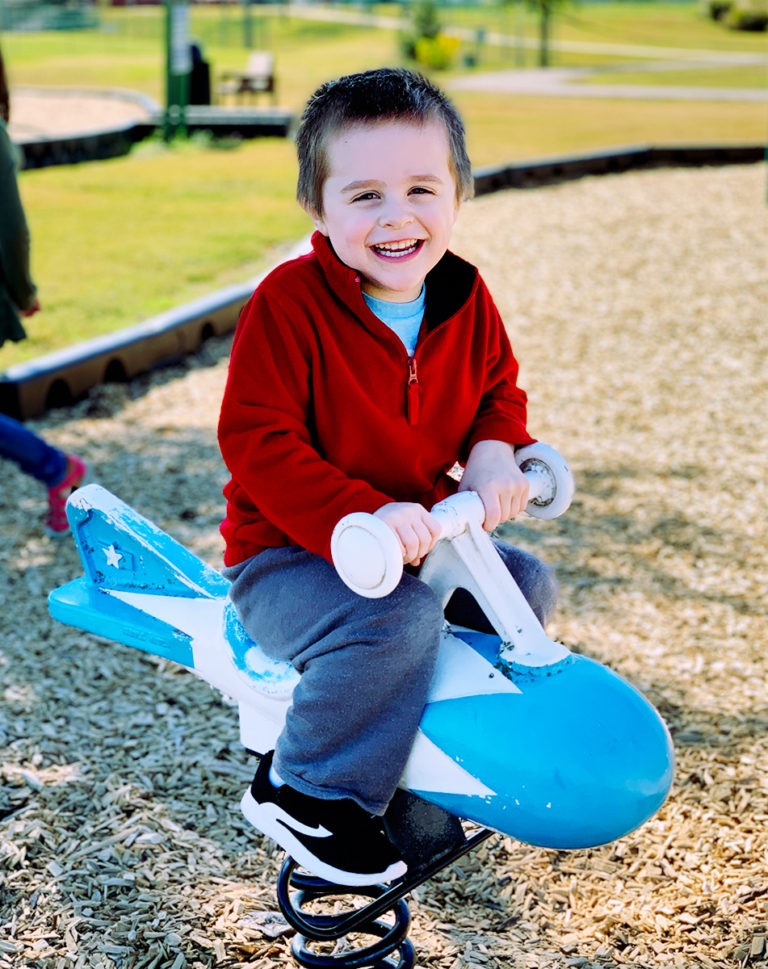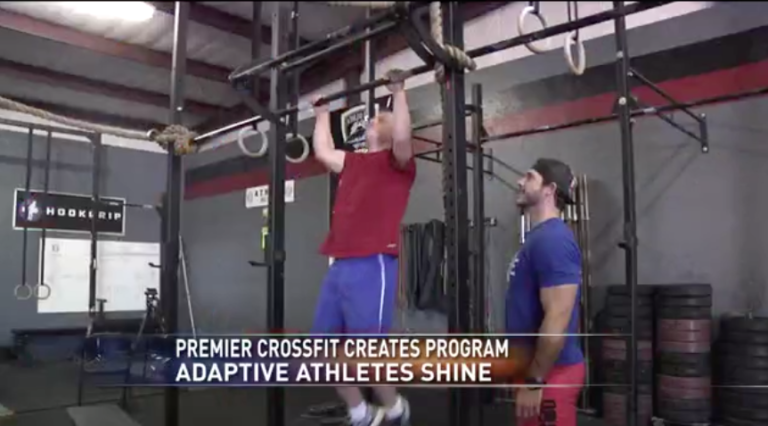Intensity: Get It – Got It – Good!
by Bob Doman
 In an effort to help our NACD families and others maximize their efforts and make the most out of the time they have to work with their children, it is incredibly important to keep reminding everyone about the significance of intensity.
In an effort to help our NACD families and others maximize their efforts and make the most out of the time they have to work with their children, it is incredibly important to keep reminding everyone about the significance of intensity.
The foundation of what we do at NACD is designing very targeted individualized programs that are created to help provide the maximum results, relative to the time invested. The significance of being targeted is that we stimulate and change the brain when we apply specific, organized, targeted input with the necessary frequency, intensity, and duration. Random input is just noise to the brain; disorganized input is irrelevant to the brain; and any input that is not received by the brain with intensity never happened.
We understand that intensity, the most important of the Super 3 (frequency, intensity, and duration), is not entirely a reflection of how loud or strong or exciting we are when working with our kids. The big factor is what the intensity is with which they are processing the input. Have you ever seen someone fall asleep at a party or in a movie theater or sporting event? These are all intense environments; but if that person is asleep, it has zero intensity for their brains—it didn’t happen. I recall the question I heard way back when in school—“if a tree falls in the forest and there is no one there to hear it, did it make a sound?” It’s not about you, it’s about them. Back to the folks at the party-how about if they are not asleep, but just dozing? Or, they just had a fight with their significant other and are running through the last argument in their mind one more time, or have a song stuck in their head that keeps going around and around. How much did all that “intensity” that is going on impact them? Probably not much. Ultimately intensity is based on how the individual is receiving/processing the input.
I have always related intensity and impact on a scale of 1-10. If something goes into a brain with the intensity of 9 or 10, learning is virtually instantaneous. Drop it down to 7-8 and we need a fair amount of frequency and duration to change the brain. If the intensity is only a 6, we need a lot of frequency and duration—many times per day and lots of days, weeks, or months. At a 5 we are in for a very long haul. And below a 5, we are better off taking a nap.
Let’s look at some of the things that affect intensity, starting with physiological issues. Diet is one of the things we talk about with all parents. I won’t get into the specifics of diet in this article but suffice it to say that if you feed your kids pancakes with syrup for breakfast, just send them back to bed and forget about school. Sleep is another foundational issue, and doing what is needed for both you and your child to get enough sleep is very important. So before we go any further, let’s see where we are. If what you are trying to put into your child’s brain is super exciting to them and they love it, they ate some good protein, had a great night’s sleep, and feel wonderful, you might get them to an 8. Trying to input something they might like but don’t love, drop to a 7; not a wonderful breakfast, drop to a 6; and then you were up with them for half of the night, we just dropped to a 5, and perhaps you are both getting ready for a nap.
Just yesterday I had a talk with a very nice family, great, concerned parents who have a teenage son on the autism spectrum. He has had a few small seizures that did not appear to have any residual effect and is on two different anti-convulsive medications. His doctors have also put him on two additional drugs that are used for schizophrenia and irritability. When I look at this boy, he looks like he is about to fall over with his eyes open. He’s at a 2-3 for intensity, and if you work hard, you can push him briefly to a 4, and on rare occasion to a 5. Under the circumstances we hope to maintain what function he has until these medications that all slow his brain down can be altered or eliminated.
Drugs that are used for seizure control and behavior and attention control are slowing down the brain. As a side note, the neurologists and neurosurgeons that I worked with almost 50 years ago were aware that the vast majority of seizures actually caused no harm, and my clinical observations over all of these years verify it; but we still have neurologists who see their mission as stopping all seizures, regardless of the fact that they are medicating the child to the point where there can be virtually no development. I’ve been happy to hear that after 50 years, there are a few neurologists acknowledging that not all seizures spell the end of the world and are being much more conservative with the medications. And fortunately there are new very promising alternatives to the drugs.
Diet, sleep, health, exercise, or the lack of, and medications all have an effect on the brain, your child’s ability to process information, and thus to be stimulated and develop.
I have a confession to make. I do not get regular organized exercise. I played sports, and I played them hard. I have almost always lived where I had a good size piece of land and always loved working outside and work hard. I enjoy walks and hikes, but a daily exercise routine—never. It’s a good thing your child has parents and helpers to help structure their days, establish priorities for them, and to motivate them and make things fun. Perhaps if I had some great fun personal trainer who came and got me at a specific time each day and praised my success, I might exercise. I probably would also need to add a 25th hour to every day. As adults we are responsible for ourselves. We can choose to eat well, exercise, whatever; however we are also responsible for our children, and it is our responsibility to see that our children eat well, get their sleep, and do all the other things needed to help them develop well. Even the smartest child isn’t wise. We need to make the choices for them and keep them heading in the right direction. Side note: How many of you give your pets more nutritious diets than your kids?
The younger the children, the easier it is to make things fun and increase the intensity. I constantly hear that little Johnny is bored with this or that or he doesn’t like it. The reality is that it’s not about the activity, it’s about the environment of the activity and how it is presented. Remember Tom Sawyer and how he got the kids to paint the fence for him? Create the right atmosphere, and you can get your kids to have a ball cleaning toilets. If something doesn’t hurt, you can create an atmosphere that makes whatever you are doing fun, and if something hurts, stop doing it because something is wrong. If you can’t get your intensity or their intensity above a 5, what should you do? You should go take a nap and come back to it later with good intensity.
One of the most common issues I see when watching program implementation is a lack of intensity when a child gets something right or does something well. I can observe someone working on processing, and the difference in the response when the child gets something right or wrong is almost indistinguishable. Often when reviewing program implementation videos, we have to pay close attention to see if a child got something correct or not because we can’t tell the difference from watching the reaction of the parent or caregiver.
Children of most any age will respond to your positive attitude and words of praise. If older children need something more to get their intensity up to adequate numbers, then explore some form of a positive token economy, where achievement as a reflection of their trying and doing something with sufficient intensity to impact their brains can purchase special privileges and such. But always let your child know that you are proud of them for their efforts and achievements. Don’t reward compliance that does not equate with intensity. Reward achievement even if you have to initially make it a bit easier for them so that they can experience success.
One of the most common killers of intensity is duration. Many of the activities we give children have a duration of only a minute or two, and the duration we give is a maximum. Maximum, not minimum. More often than not, more turns a positive into a negative. We encourage parents to, if at all possible, end an activity on a high note. Parents tend to continue an activity until the child has had it, and it turns negative. The result of that is the next time you go to do that activity the child recalls it as a negative, not a positive. Imagine giving your child the forbidden fruit—ice cream. You give them just a spoon or two and they love it and you stop. They want more. Now imagine that you gave your child a couple more of spoons of ice cream—still loving it—and then you gave them a small bowl. They’re still loving it, but not quite so much. Then make them eat a large bowl, having to force them to eat it over the course of an hour; and to really make it fun, make them eat more and more until they throw up. That would sure teach them to love ice cream. When should you have stopped? We have the ability to turn most anything that can be positive and fun into a negative. Remember: it’s all about intensity.
The big secret to success is intensity—the intensity with which your child takes in the input you are providing.
Intensity is not only foundational, it is mandatory: Get it?
Anything that adversely affects your child physiologically has a negative impact on intensity: Get it?
Any mediation that affects your child’s brain is likely to have a negative impact on their intensity: Get it?
What you do can affect your child’s intensity, but ultimately, it’s a matter of doing what works to create intensity in them: Get it?
Too much of a good thing is a bad thing; stop while you are ahead: Get it?
If your intensity or your child’s falls below a 5 and you can’t raise it, take a nap: Get it?
To be successful we need to provide your child with specific targeted input with sufficient frequency, intensity, and duration: Got it?
Good!





